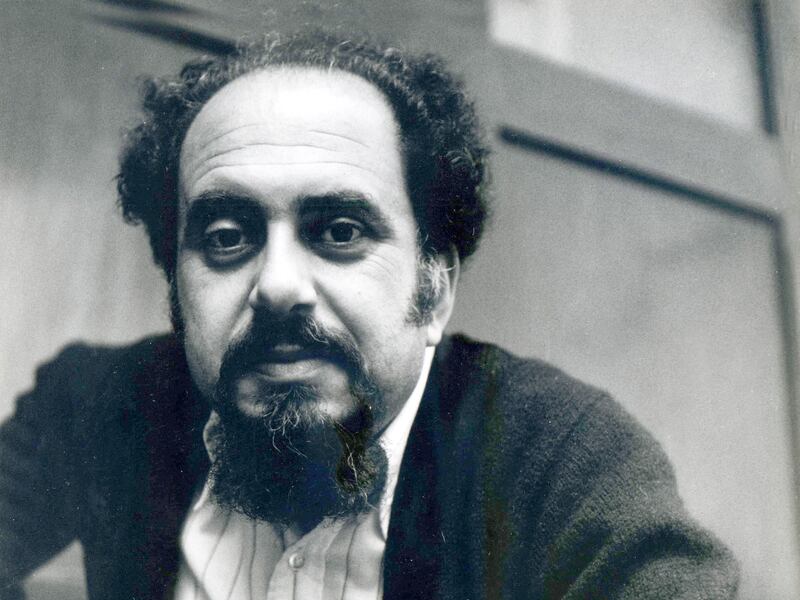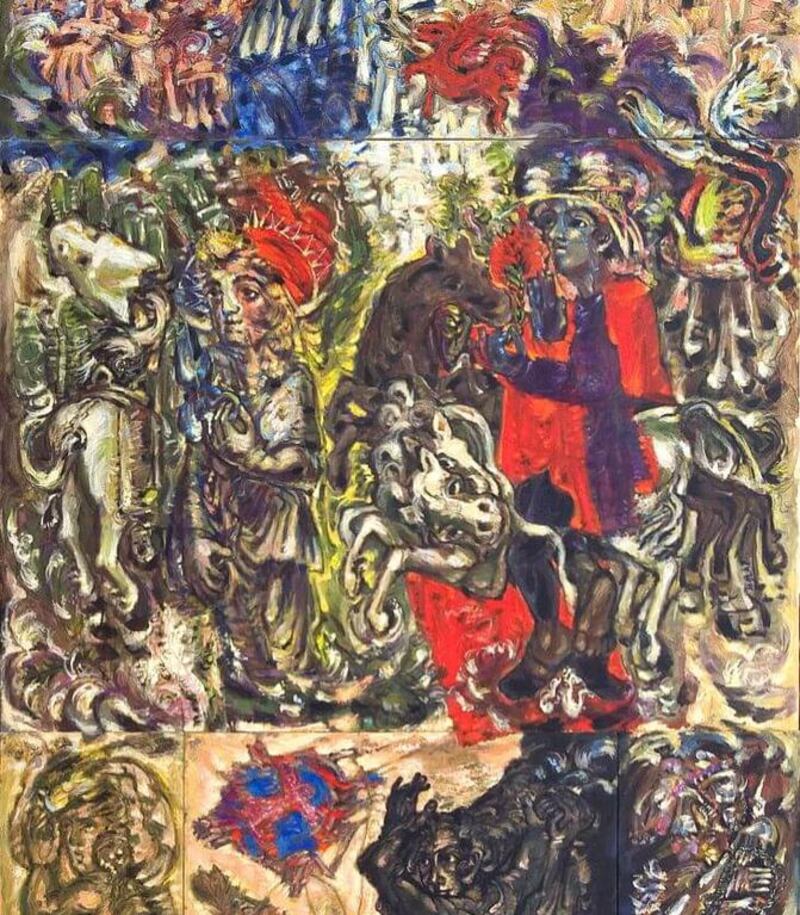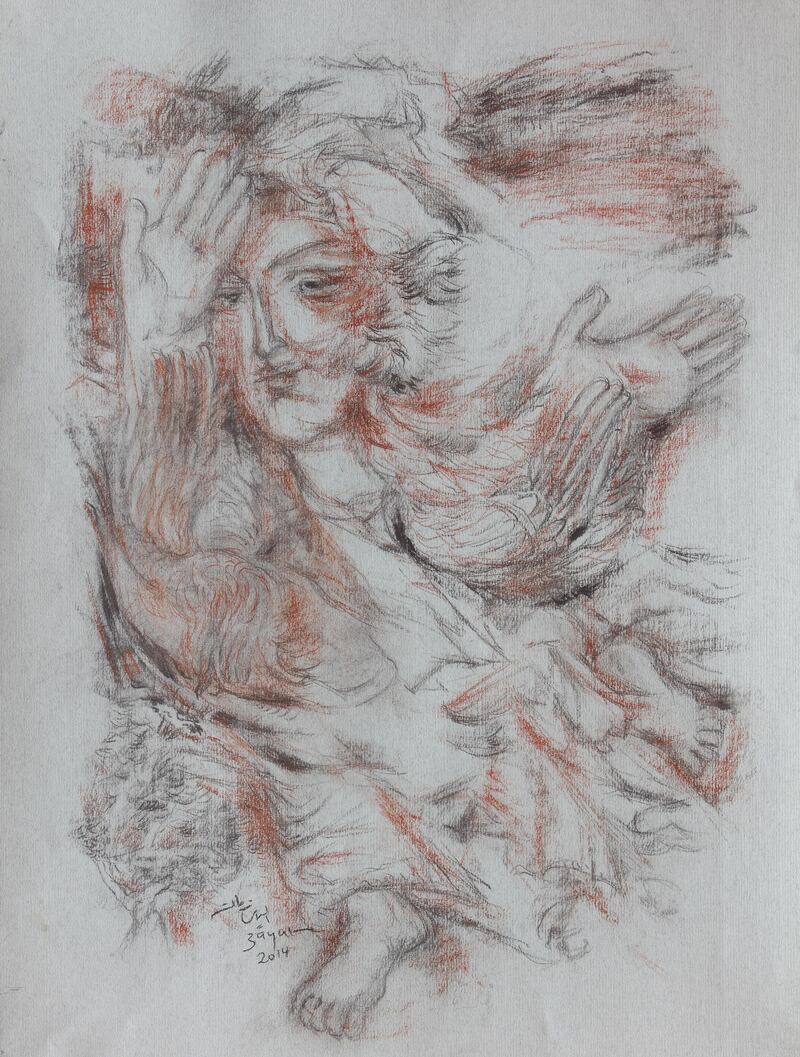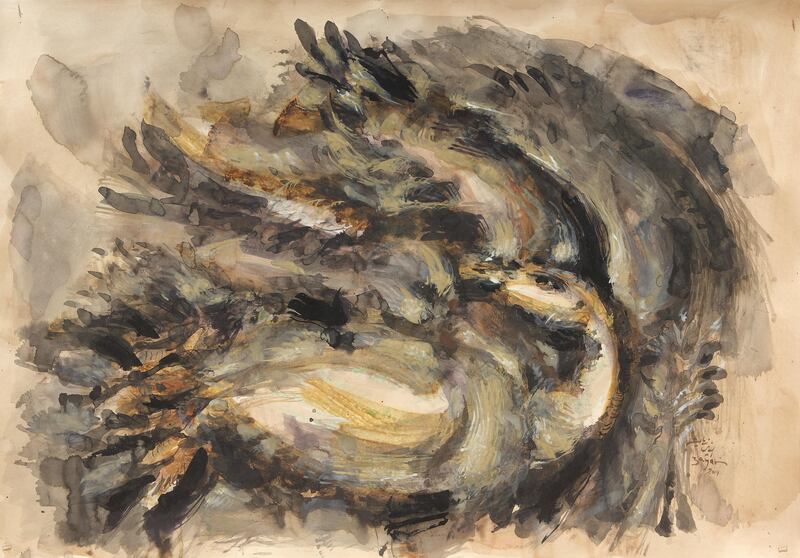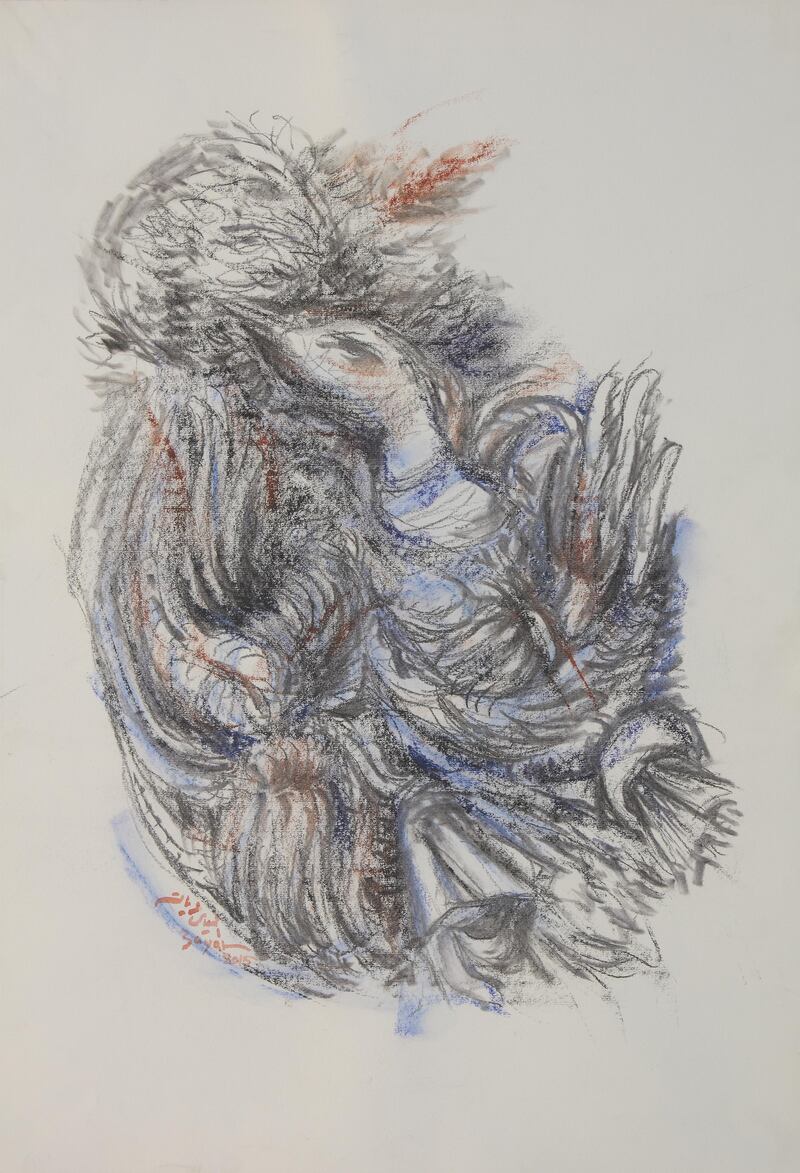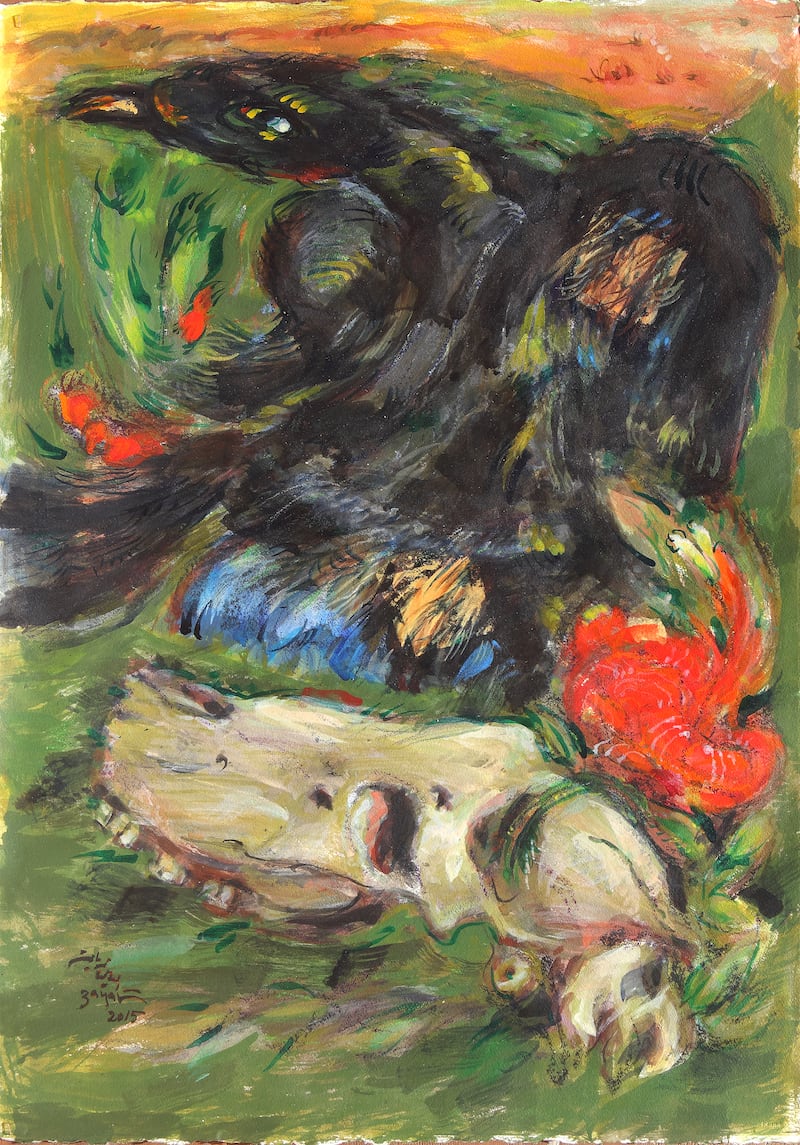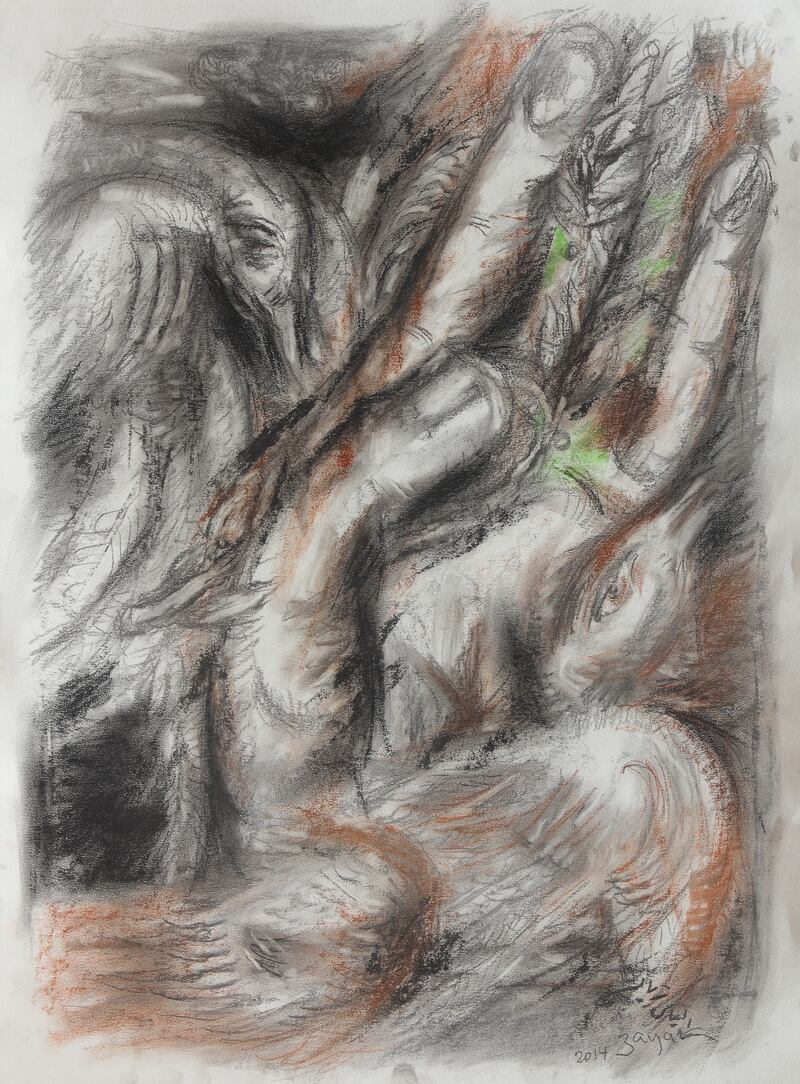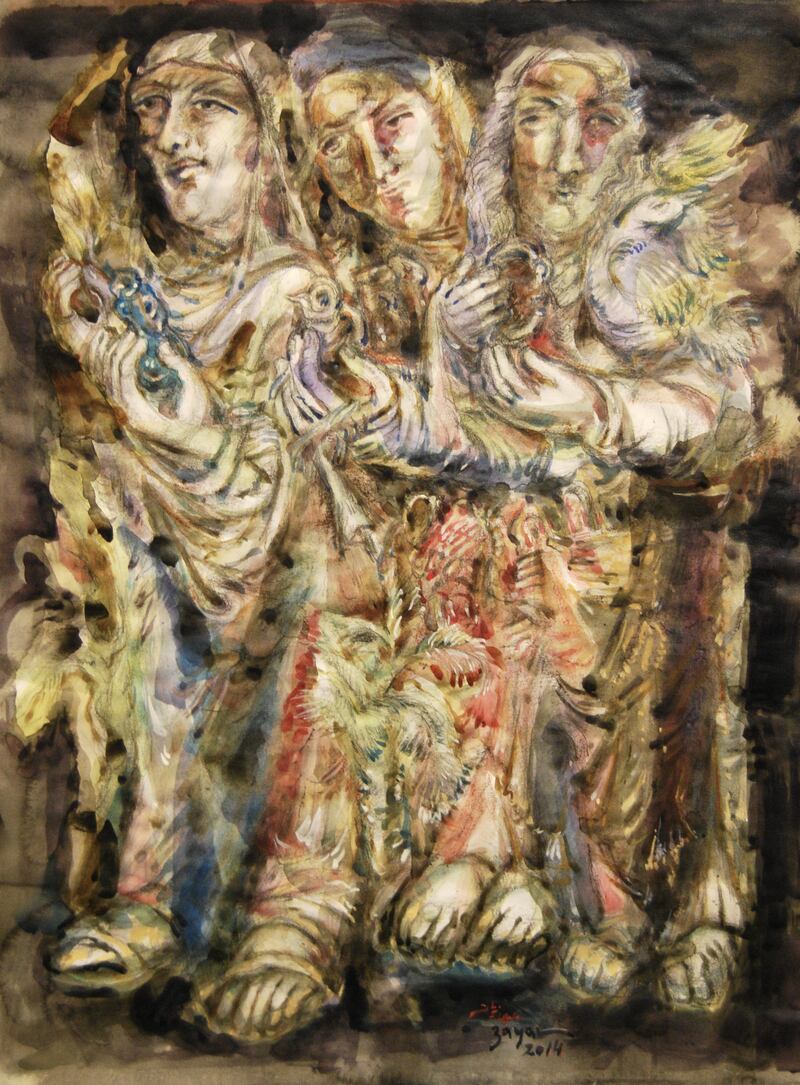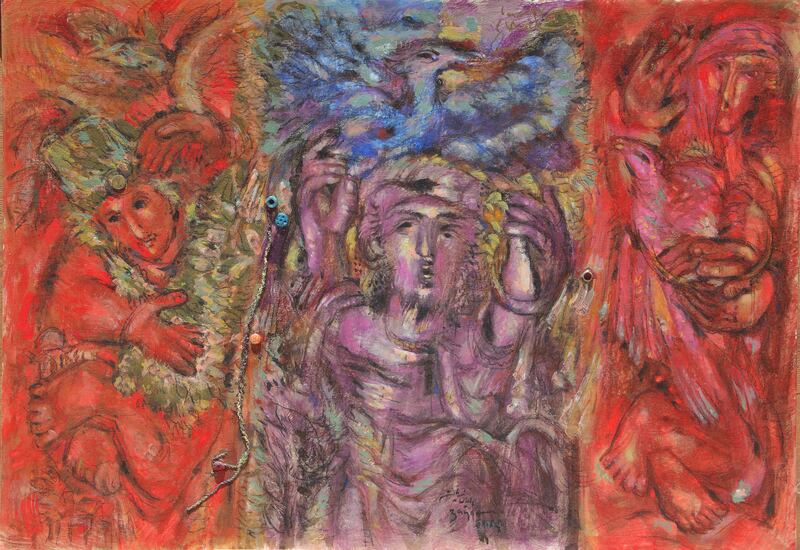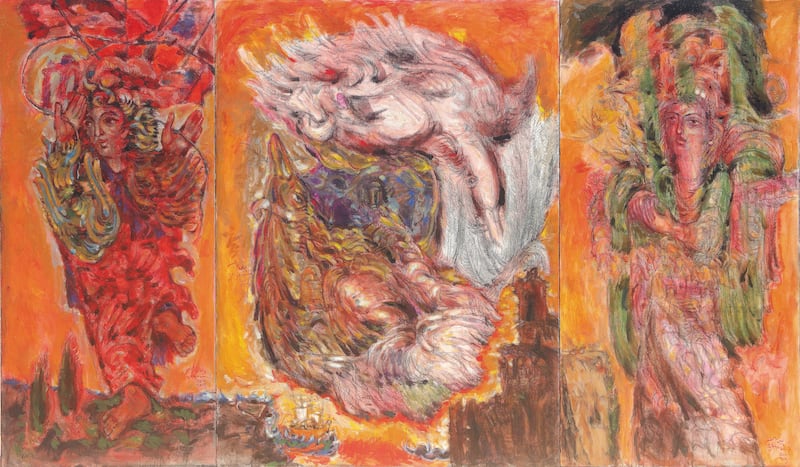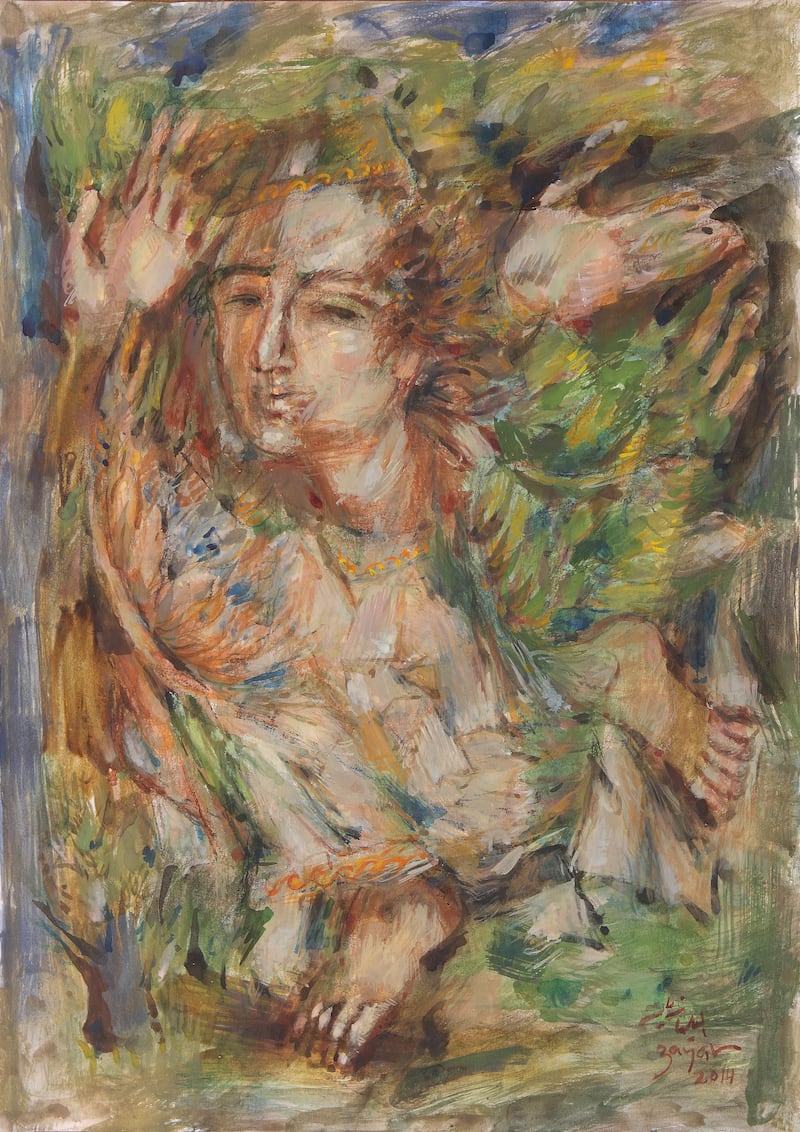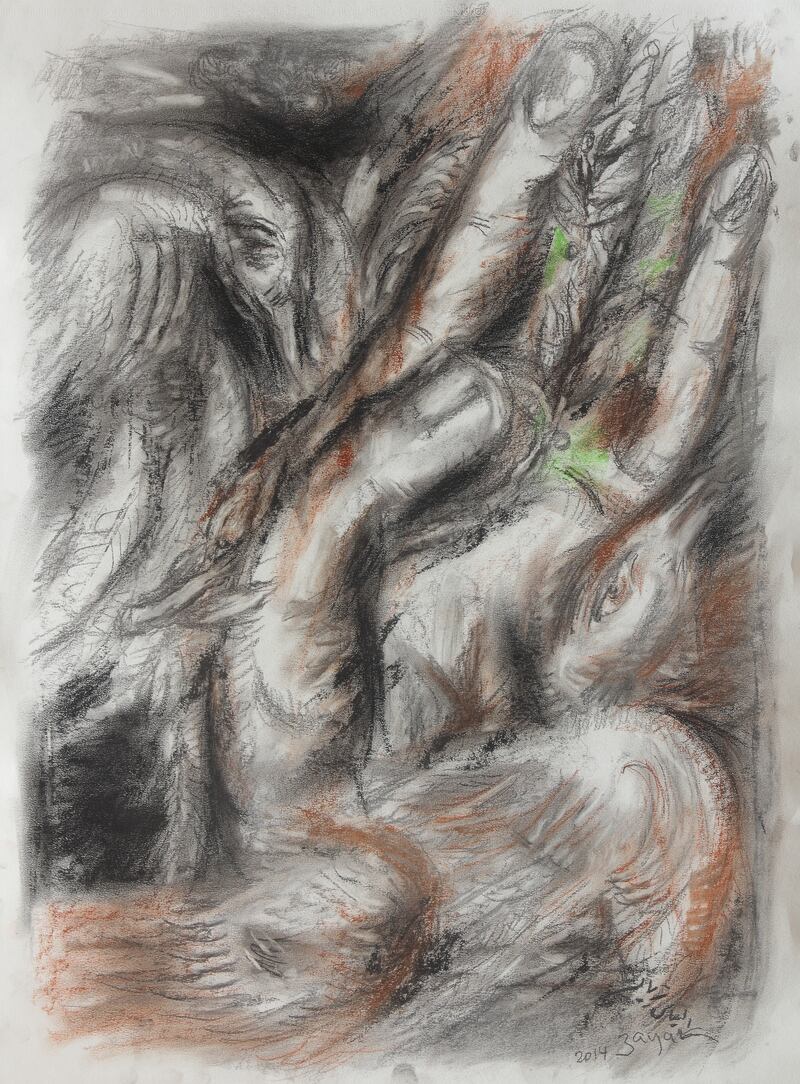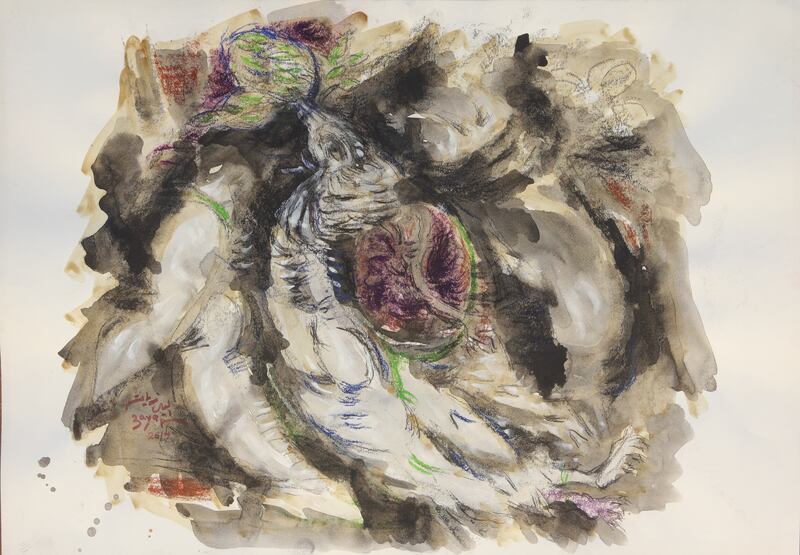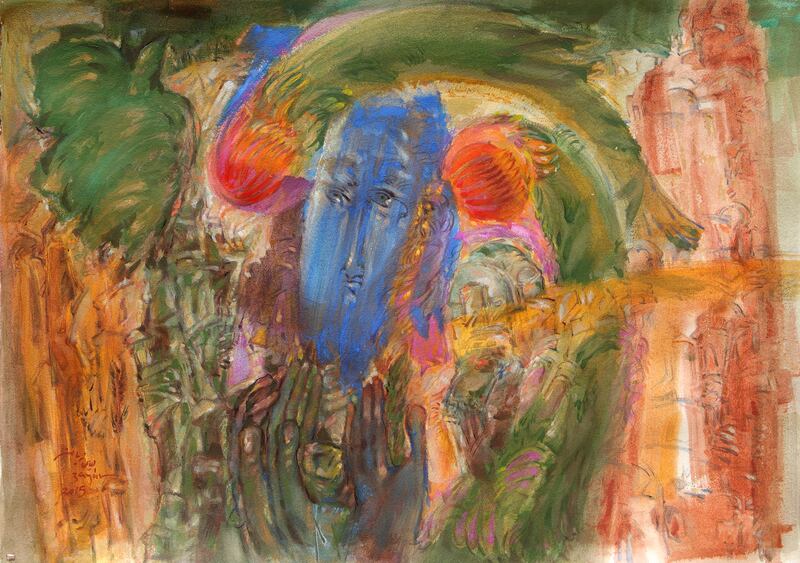Elias Zayat, the post-war contemporary painter and one of the most influential Syrian artists of the 20th century, has died aged 87.
Green Art Gallery in Alserkal Avenue, where the artist’s last solo exhibition After the Deluge was held in 2015, confirmed the news online.
“Green Art Gallery is saddened to hear the news of the passing of the acclaimed Syrian artist Elias Zayat, one of the country’s most significant artists of the 20th century, and a key founder of Syria’s modern art movement,” a representative said.
Zayat was an artist, art restorer and historian. He was one of the founders of the Faculty of Fine Arts at the University of Damascus, where he taught until his retirement in 2000 and had published several papers on art criticism and regional history.
A prolific painter, Zayat’s body of work drew on a broad range of interests and influences spanning mythology, ancient civilisations, Sufi thought and religious iconography.
Considered one of the the great modern artists of Syria, Zayat’s chief preoccupation has always been his homeland.
“Everything I’ve done in my life stems from my attachment to my country,” he told The National in 2015, when speaking about his solo exhibition at Green Art Gallery. “My family has been in Damascus for at least three generations and this initially inspired me to discover my roots and relationships tied to Syria and the Levant. With these paintings, I’m telling you that this is where I am from.”
Zayat was born in 1935 in Damascus and grew up in the Christian district of Bab Tuma. He began his career as a painter at 17, under the artistic training of the leading Syrian artist Michael Kurcheh, one of the country's pioneers of Impressionism and an influential figure in the region's modern art movement.
In 1956, Zayat was granted a governmental scholarship to study at the National Academy of Art in Sofia, Bulgaria. This was an extremely influential time for him.
Studying under portrait artist Boris Mitov and socialist realism portrait painter Ilya Petrov, Zayat experimented with different techniques and was greatly inspired by post-Impressionism. He was also able to travel across Europe during this time, visiting galleries and museums to feed his interest in art history.
Zayat continued his studies at the Faculty of Fine Arts in Cairo where he trained under Abdul Aziz Darwish, one of the pioneers of realistic Impressionism in the Arab world. Egypt proved to be another great influence on Zayat’s practice.
As he did in Europe, Zayat visited many museums in Egypt, discovering and studying ancient Egyptian and Islamic artworks and the Fayum mummy portraits, dating back to the late 1st century BC.
On visits back to Syria, Zayat also travelled across the country to archaeological sites such as Horan and Palmyra to study the aesthetic qualities of ancient Syrian art and reconnect with his homeland's cultural heritage.
He then returned to Europe in 1973 where he studied art restoration at the Academy of Fine Arts in Budapest, Hungary.
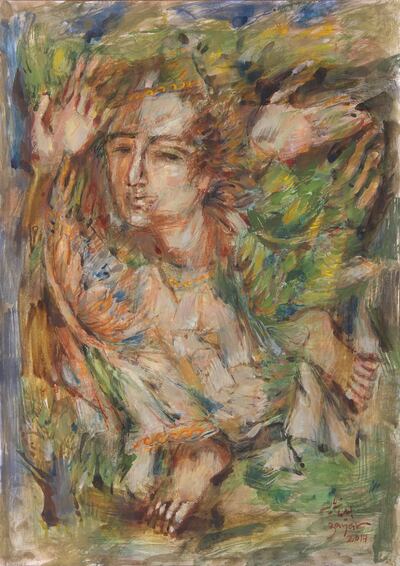
By the time he returned permanently to Damascus in the mid-1970s, Zayat had started to develop a unique style influenced by a multitude of artistic practices and aesthetics, from the ancient art of Egypt and Syria, to the techniques of post-Impressionists such as Paul Gauguin and Henri Matisse.
While he eventually moved away from portraits influenced by post-Impressionism, his work evolved to carry a specific DNA and a visual language that has proven to be both timeless and universal.
Through his dramatic portraits, stylised figures are intertwined. They float, surreal but substantial in their own right, against flattened backgrounds. Their stares face inwards, or beyond the frame the scales of their features and bodies, while exaugurated and morphed to reveal a balanced and thoughtful hand, which has merged different styles and voices in a way that is new and unexpected.
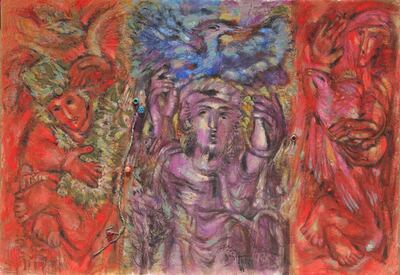
From his use of colour and line to the vacant, virtuous and sometimes tortured appearance of his figures, as well as the soft composition of pictorial elements, balanced by the seeping of shapes into each other, Zayat’s work is otherworldly but also tied to an immediate and familiar subconscious state.
Throughout his career, Zayat received several awards, including The Art and Literature Appreciation Award, Ministry of Culture and National Orientation, Syria (2013), the Bronze Medal for Zabadani Valley, Moscow Youth Festival Award, Russia (1975); and First Award in Student Art for Elm Trees in Ma'loula, University of Damascus (1954).
His works have been shown at several solo exhibitions, including Elias Zayat: Homage to Gibran, Four Seasons Hotel, Damascus (2010); Dance and the City, Atassi Gallery, Damascus (2002); Un Oiseau Sur Un Arbre, Al-Sayed Gallery, Damascus (1995); and Union of Bulgarian Artists Gallery, Sofia (1985).
He has also been part of a number of prestigious group shows around the world including Millennia of Creativity, Nabu Museum, Batroun, Lebanon (2018); Syria: A living History, Ismaili Center, Dubai (2017) and Syrian Artists at the Week of Syrian Culture, Brunei Gallery, SOAS University of London (2004).
Zayat's works are also part of collections found at Barjeel Art Foundation, Sharjah; Ramzi and Saeda Dalloul Art Foundation, Beirut; Nabu Museum, Heri, Lebanon; Institut du Monde Arabe, Paris; and National Museum of Damascus.
